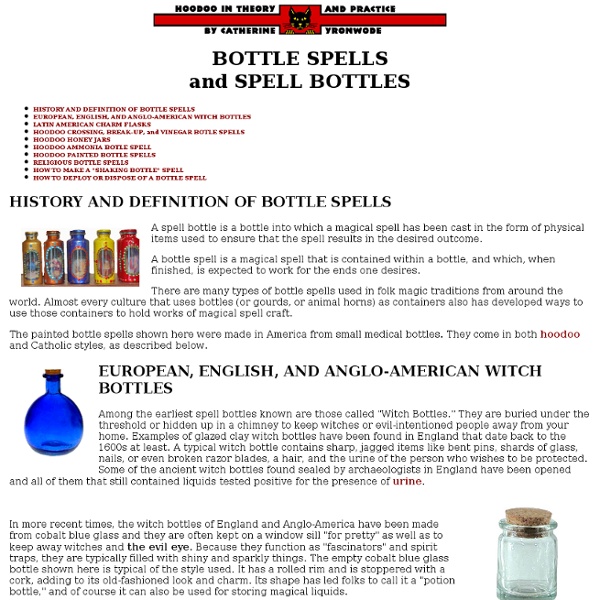Bottle Spells and Spell Bottles

Free Magic Library
The Key of Solomon Index
Sacred Texts Grimoires Title PagePrefaceList of PlatesPreliminary DiscourseIntroduction (from Add. MSS. 10862)Introduction from Landsdowne MSS. 1203 Book I Chapter I. Concerning the Divine Love Which Ought To Precede the Acquisition of This KnowledgeChapter II. Plates The Order of the PentaclesPlate IIPlate IIIPlate IVPlate V.Plate VIPlate VIIPlate VIIIPlate IXPlate XPlate XIPlate XII Book II Prefatory NoteChapter I. Appendices Ancient Fragment of the Key of SolomonThe Qabalistical Invocation of SolomonPlate XV.
Free Book of Shadows .com - The Book of Shadows CD-ROM
The Book of Shadows CD-ROM is a Complete Library! And it's all FREE The Book of Shadows & The High Magick Compendium CD-ROM What it is Throughout time, pagans have known that human beings have possessed the power to alter reality. Finally, a program that teaches you how. This is an electronic Book of Shadows Software and e-book anthology, designed as a compendium of knowledge that is easily accessible on your PC. System Requirements: PC with Windows 95, 98, NT, ME, XP, or 2000 Pentium II Processor or equivalent or higher An Open Mind What's in it This CD-ROM is jam-packed full of spells, articles, and other wicca, pagan, and magick information. Over 700 pages of pagan information, spells and resources in the Book of Shadows!
Internet Sacred Text Archive Home
The Celtic Connection
The Michael Teachings
Back in 1979, novelist Chelsea Quinn Yarbro presented a whole new framework for understanding personality and spirituality. This framework wasn’t hers, but had been “dictated” to a group of friends in San Fransisco through a Ouija board. The source of the information referred to itself simply as “Michael”. Rather like the ultimate computer in The Hitchhiker’s Guide to the Galaxy, Michael would readily answer any question about life, the universe and everything. The Ouija board is now long gone but the questions and answers have never stopped. Messages from Michael tells the story of the origins of the Michael teachings. So where to begin? Let’s start with… Who – or what – is Michael? When the messages first came through, the source explained that each individual soul evolves in consciousness through the long and often difficult process of reincarnating, living many different lives in many different circumstances. The being we call Michael is one of these—an integrated entity. Essence Goal
Sacred Texts Timeline
Sacred-textsSacred Time Origins of World Religions This is a timeline which gives the history of sacred texts, as well as a few other relevant events. Of course, not all of the dates in this timeline are accurate; some are entirely conjectural. I have included a few dates, events and documents which are or may be entirely fictional. For space reasons, I have used the abbreviations listed at the end of this file. Key to Abbreviations auth. = author. b. = born ca. = circa Can. = Canonicalization Cent.= century. Cod. = Codification comp. = composition. d. = died hist.= accepted historical date o.c= date of original (typically, although not necessarily oral) composition. Orig. = original O.T. = Old Testament. p.v. = printed version Rev. = Revised. trad. = traditional date trans. = translation w.v. = written version [bhi] Baha'i [bud] Buddhism [tib] Tibetan Buddhism [chr] Christianity [cfu] Confucianism [hin] Hinduism [isl] Islam [jai] Jainism [jud] Judaism [shi] Shinto [skh] Sikhism [tao] Taoism [wic] Wicca [egy] Egypt
Related:
Related:



